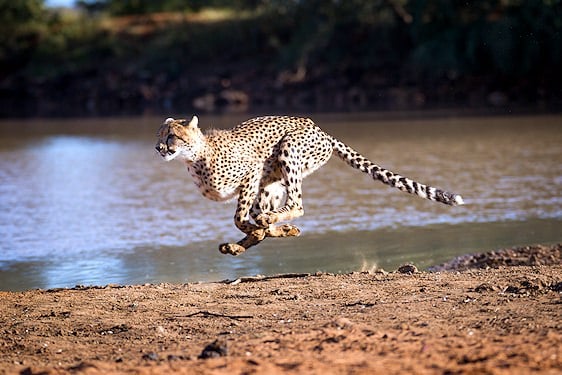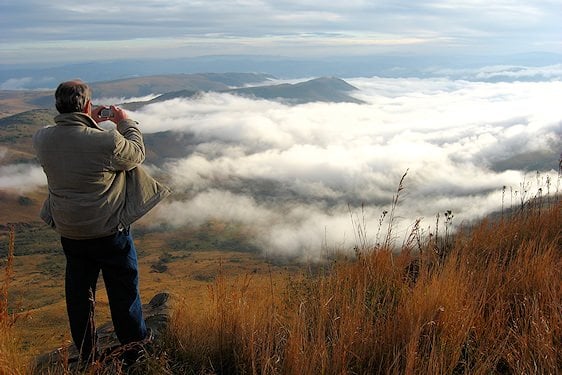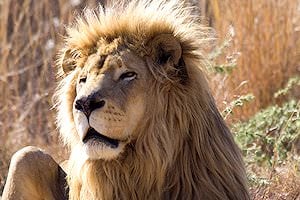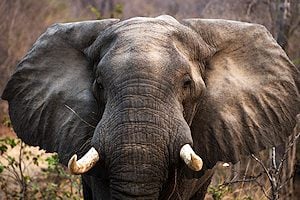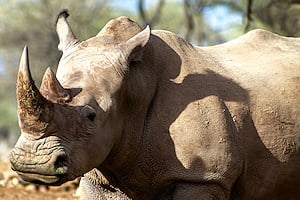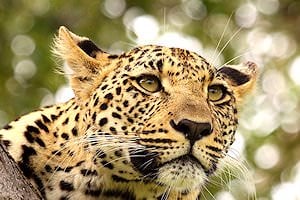Giraffe
The stately giraffe is the world's tallest land mammal and a remarkable animal to observe on a safari in Africa.
Need Advice?- Home
- >>
- African Travel
- >>
- South Africa
- >>
- National Parks
- >>
- Kruger National Park
- >>
- Mammals
- >>
- Giraffe
Description
Their necks can reach lengths of up to 2 meters, making their overall height between 4.6 and 6.1 meters, on average. A distinct feature of giraffes is their fur pattern – tan with large brown patches covering their bodies from the top of their legs to their necks.

They occur widely in Africa's protected areas. Different subspecies occur – a total of 8 throughout the continent. These are found in the Kruger National Park and other protected areas of Southern Africa are called the Cape or South African Giraffe. Another subspecies, the Angolan Giraffe, is also found in Namibia, Angola, and Botswana.

Status
Giraffe populations are regarded as healthy and in no harm or threat to either endangerment or extinction, which is why their status, according to the IUCN's red list, is of "least concern." However, particular subspecies are threatened mainly due to illegal trade in giraffe skins, illegal hunting, and habitat loss to agriculture and city development. Among the endangered and threatened subspecies are the Nubian, Reticulated, Kordofan, West African, Masai, and Angolan giraffes – the Cape giraffe is the only subspecies not classified as endangered.

Habitat
The giraffe's height is crucial in helping it reach its favorite meal at the very top of trees – new, soft, green leaves. There will be trees and a permanent water source in a typical environment where they occur. Like elephants, rhinos, and other large herbivores, they need a lot of water to stay hydrated. They can significantly contribute to preventing overgrowth in denser areas while also playing a crucial role in something called resource partitioning – the sharing of resources among competing species by using different parts of the same resources. As kudus and other browsing antelope eat away at the lower leaves of a tree, the giraffe prevents competition with these species by feeding on leaves they cannot reach. In this way, any given woodland environment can sustain more species, contributing to the region's biodiversity. It is an ability they share only with their most closely related cousin, the Okapi.

Social Organization
These animals form herds, usually small herds of mothers with their calves, though all-female, all-male and mixed herds occur. Some males lead a solitary life for short periods, similar to other large herbivores, though all-male groups are more common. Several females may form a single group, ensuring more protection when raising their calves. These groups consist of related individuals on their mother's side – females who are sisters or cousins. Such groups do not have fixed territories, nor do all-male groups, though a herd does have a home range, depending on whether food and water are readily available. Several different herds may come together at watering holes or other water sources where calves play-fight.
Finest Safari Areas in Africa for Encountering Giraffe
We recommend the following National Parks and Private Reserves for the best chances of spotting the giraffe on safari game drives and bush walks.

Social Behavior
They communicate vocally infrequently. Instead, they use body language as their primary medium of communication. Touching, licking and different postures are all forms these animals use to communicate with one another. As a result, they are not territorial animals and do not employ the same scent-marking techniques other mammals often use. However, they still use their olfactory senses – acute senses of smell – during courtship rituals to identify individuals. Dominance, defensive and antagonistic displays, and warnings come in the form of a change of posture or a movement known as "necking," where two giraffes, usually males, swing their necks toward one another in a unique fighting display.

Reproduction
When a bull identifies a cow in heat, he follows her and fends off competition to the point they mate. Courtship involves foreleg lifting display adopted by many antelope species as well, with licking and rubbing between the pair as a sign to others that they are mated. After that, they sniff or test one another's urine before the bull mounts her in a very clumsy and uncomfortable display – the long legs of a giraffe make these movements somewhat bearish. On average, the gestation period for giraffe females is very long, between 14 and 14 ½ months. Because of this, they need around 16 months to recover and raise their young before starting to ovulate again. Females generally mature sexually by age four, while males only start competing for mates at seven years of age, when they are fully grown and able to challenge older males.

Anti-Predator Behavior
Lions are the most significant natural threat to giraffes – primarily to giraffe calves, as adult giraffes are worthy adversaries and are only ever targeted out of desperation. Mothers typically defend their calves using their most potent weapon – giant legs. Giraffe legs are around 2 meters in length and can deliver a kick that could badly injure or even kill a lioness. Mothers generally stay within a 40-meter radius of their calves to keep a close and watchful eye at all times. The same defense strategies are used when adults have to defend themselves, but their added speed and good vision make it even harder to bring one of them down. Their necks and the horns on their heads can also be used for defense, though this is typically a last resort since it renders them more vulnerable to a lethal bite.

